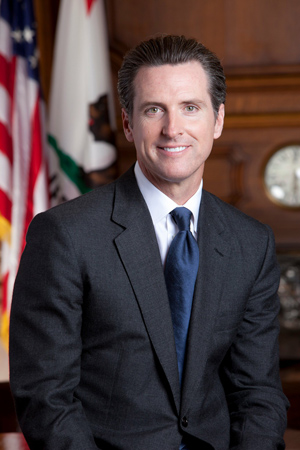WHAT YOU NEED TO KNOW: The Governor is sponsoring new legislation that will add measures to hold cities and counties accountable when they fail to adequately address homelessness. The legislation, AB 3093 (Ward), will ensure that local jurisdictions meaningfully account for the needs of their homeless populations and lowest income households as part of the Regional Housing Needs Allocation (RHNA) process and in local housing plans.
May 8, 2024 - SACRAMENTO – Building on new measures that will increase oversight of state homelessness funding to ensure accountability by local jurisdictions, Governor Gavin  Newsom on Tuesday announced his support for new legislation to ensure cities and counties do their part to tackle homelessness. The legislation – Assembly Bill 3093, introduced by Assemblymember Chris Ward (D-San Diego) – will require that local jurisdictions comprehensively consider the needs of homeless populations as part of the RHNA process and in their Housing Element planning efforts.
Newsom on Tuesday announced his support for new legislation to ensure cities and counties do their part to tackle homelessness. The legislation – Assembly Bill 3093, introduced by Assemblymember Chris Ward (D-San Diego) – will require that local jurisdictions comprehensively consider the needs of homeless populations as part of the RHNA process and in their Housing Element planning efforts.
By creating new income categories to more accurately capture the needs of individuals experiencing and at risk of homelessness and requiring local jurisdictions to consider each of those categories in their Housing Elements, this bill would require communities to more comprehensively plan for the housing needs of individuals currently experiencing or at risk of homelessness. The legislation will also require each region to submit data on the needs of individuals and families experiencing homelessness to better ensure that they are accounted for in the RHNA process. This is part of a larger effort by the administration to boost access to housing and ensure accountability to address homelessness at the local level.
WHAT THE GOVERNOR SAID: “This new approach will require locals to better account for the needs of the lowest-income households and people experiencing homelessness in their long-term housing plans. The state will continue to take action to provide greater accountability and ensure that communities are aggressively working toward the creation of more housing and addressing the needs of individuals experiencing homelessness.”
AB 3093 comes as part of recommendations by the California Department of Housing and Community Development (HCD) in their recently released California’s Housing Future 2040: The Next Regional Housing Needs Allocation (RHNA).
“Far too often, we’re attempting to address the issue of homelessness without the complete picture,” said Assemblymember Chris Ward (D-San Diego). “Those who are already unhoused or on the brink of falling into homelessness are not represented in our housing planning processes. AB 3093 will ensure that our most vulnerable residents are included into the Regional Housing Needs Allocation so we can recognize and plan for the housing needs of those earning the lowest incomes in our state.”
Informed by extensive stakeholder engagement, the report includes recommended changes to the RHNA and Housing Element process to more effectively plan for the housing that will be needed across the state by 2040. Among these recommendations was that the RHNA determination process be revised to better account for the housing needs of Californians experiencing and at risk of homelessness.
“With a record number of people experiencing homelessness, policymakers need timely and detailed data to design and implement solutions that effectively address this crisis,” said Business, Consumer Services and Housing Agency Secretary Tomiquia Moss. “This legislation will better capture the full extent of housing needs across income levels so that we can more effectively plan to meet those needs.”
“The state’s actions, particularly on an issue as critical and as prevalent as homelessness, should always be informed by the best possible data,” said HCD Director Gustavo Velasquez. “With the partnership of our regional governments, we can identify communities with the greatest need for permanent supportive housing and deploy our resources and assistance in a way that makes the greatest impact.”
Currently, RHNA categorizes those earning at or below 50% of Area Median Income (AMI) as very low-income. This bill would distribute this category into very low-income (30-50% AMI), extremely low-income (15-30% AMI), and acutely low-income (0-15% AMI), better preparing jurisdictions to plan for housing that meets the needs of the lowest-income households and people experiencing homelessness. In turn, these updates will help HCD hold jurisdictions accountable to meeting their housing goals and addressing homelessness in their communities.
Governor Newsom is challenging the status quo and implementing new approaches to solve the dual crises of housing and homelessness, with a focus on greater accountability. The Governor recently tapped HCD’s highly successful Housing Accountability Unit (HAU) for an expanded role over state homelessness investments, with HAU becoming the Housing and Homelessness Accountability and Results Partnership Unit, otherwise known as HHARP. Since its inception, HAU has unlocked more than 23,000 units of housing that otherwise may not have been built.
To learn more about this proposed legislation, click here.
Source: Office of the Governor
